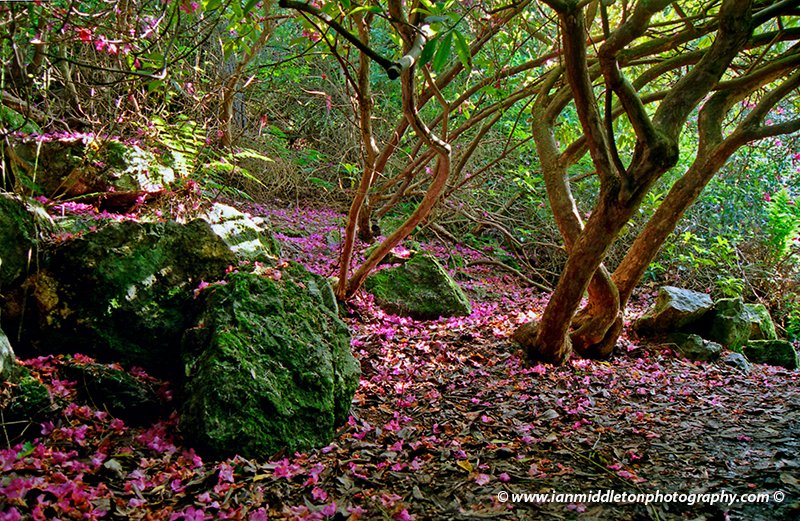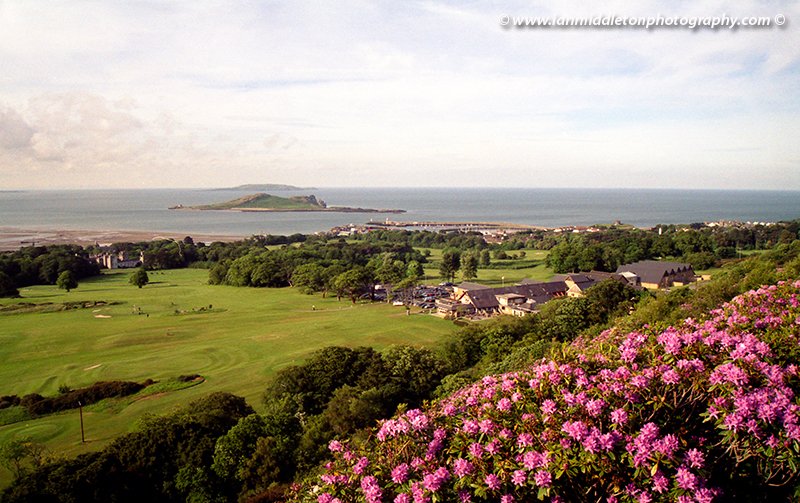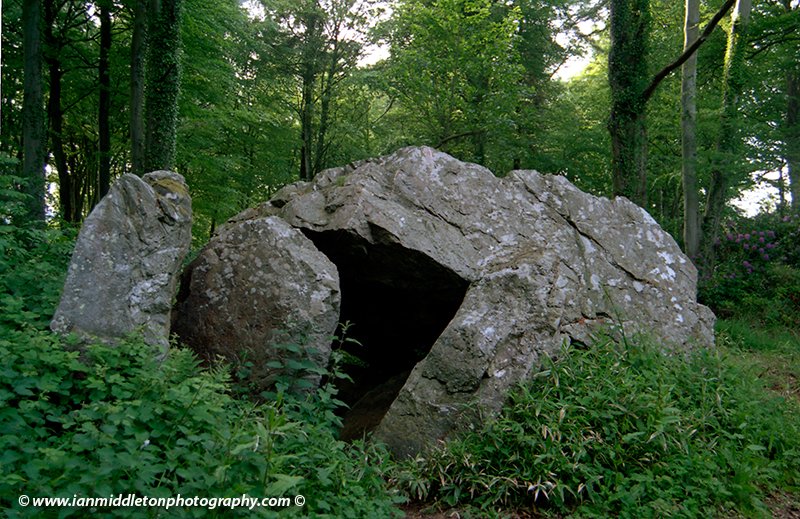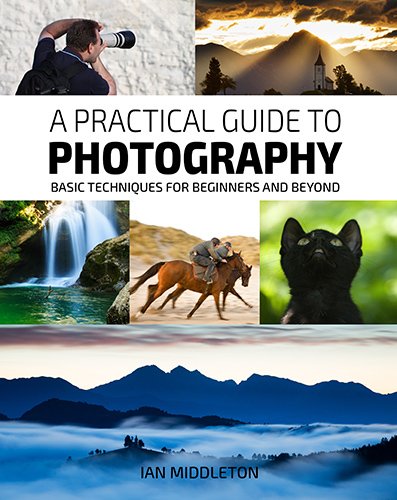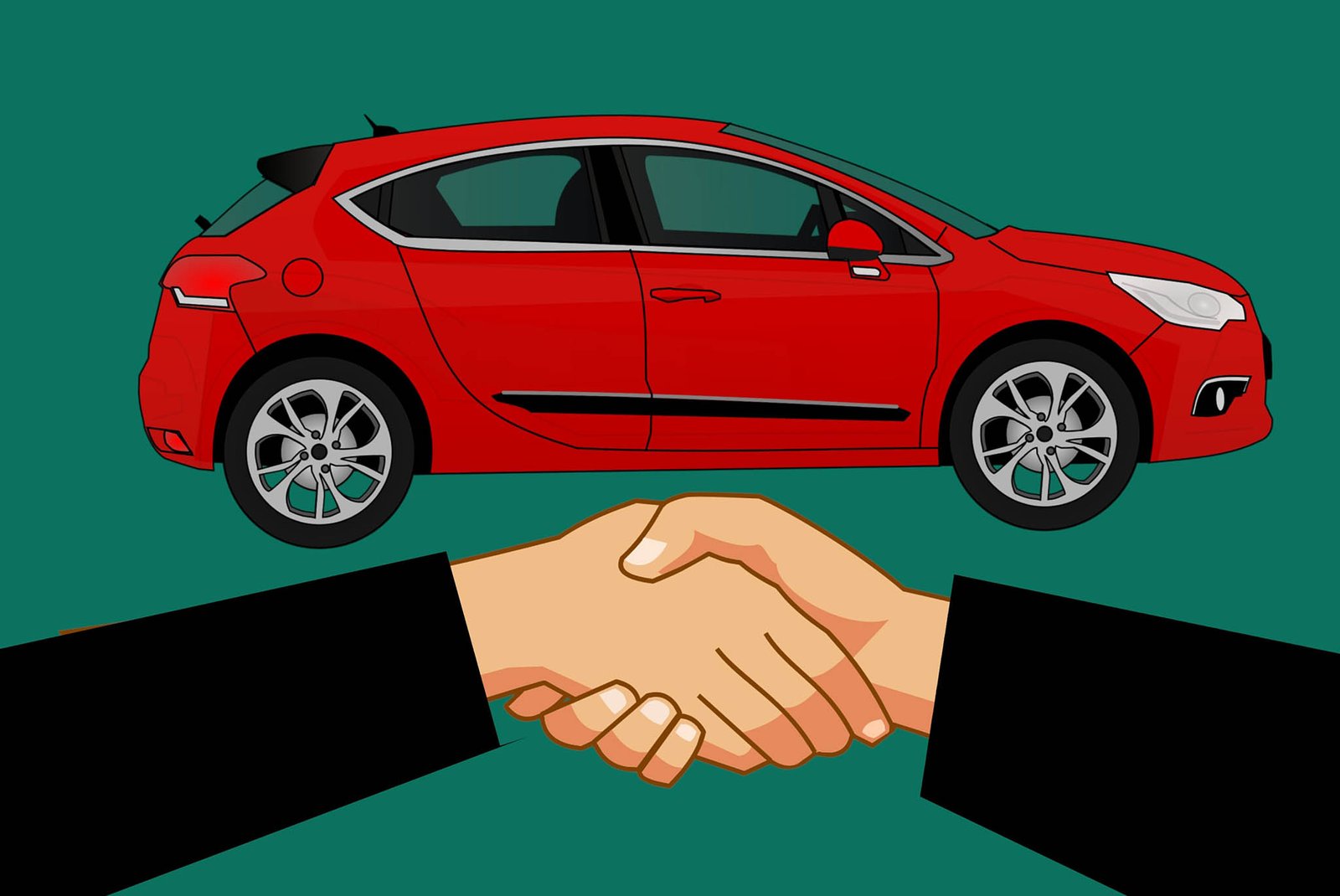‘Have you been to the new Dracula Museum yet?’ ‘No,’ I replied. ‘Where’s that?’ ‘It’s just beyond the bridge there.’ I was talking to a local man about things to see here in Clontarf, in north Dublin. It’s just a few minutes ride on the DART and the area is steeped in history. Upon arrival I had spotted a sign for Clontarf Castle Hotel and had gone to check it out.
Clontarf Castle
The original castle was built in 1172 but more than a century before that the area became a landmark during the famous Battle of Clontarf on Good Friday 23rd April 1014.
Back then Clontarf was all woods with a great river flowing through it. The High King was Brian Boru. The Vikings had a stronghold in Dublin City at the time, and the Viking King Sitric ruled there. There is an old coin in the National Museum which has King Sitric’s profile engraved upon it. It was found on a site near Christchurch Cathedral in Dublin. Battle began with the treachery of the Provincial King of Leinster, Mael Morda, forming an alliance with King Sitric.
The High King, enraged by this treachery, marched against them all and a great battle was fought at Clontarf. His armies were victorious, but the victory was short-lived for Brian Boru. The King set up his tent on the site where Clontarf Castle now stands, and was guarded by five of his soldiers. A few of the Vikings retreating from the battle chanced upon the tent and, knowing who was inside, killed the guards and then burst into the tent and slay the King as he prayed. By this time Brian Boru was 72 years old.
Inside the hotel, the guy at reception told me that the stone pillar in the main reception area is the exact site of the killing. It was nice to see that much of the castle’s medieval décor had remained. A knight’s suit of armour guards each hallway, while hanging tapestries, nooks and crannies and little doorways add to the mystery of the castle. I had a coffee in the bar while I read the story of Clontarf. After this I took another wander around the place and then headed off before security became too concerned.
Castle Dracula
Back out on the street I’d got talking to this local man who told me about the Dracula museum. It appeared that Bram Stoker had been born right here in Clontarf. I must confess that I’d had no idea he was even Irish, let alone from north Dublin. So I decided to go and check it out.
From the DART station you just have to turn left and go under the bridge and there is a small entertainment complex. I was told the Dracula Museum was inside the Bar Code building. This place was huge, and a sign directed me down a long corridor past a big swimming pool and into a large bar and restaurant area. There was no one around. I was a bit confused as I couldn’t see any more signs. I spotted some steps going up into an amusement arcade and tried that. The museum reception was there.
It was after 12.00, yet no one seemed to be around. The museum only opens from midday to late evening on Friday, Saturday and Sunday. It was after midday on Saturday. The place seemed strangely devoid of life. The games machines around me were flashing and beeping, yet no one was playing them. I felt like I was in one of those movies where the apocalypse had happened and no one had told me, and that I was the only man left alive on earth. I wondered if this was part of the museum experience.
A while later a man came up to reception and informed me that the museum was indeed open. He led me through a long hallway to a set of double doors. He explained that guided tours are available on the hour, or I could go through alone. I opted for the latter.
He gave me a rough description of the museum and then left me to it. Through the double doors I found myself in a long, dimly-lit corridor with plaques on the left wall that took you through the whole of Bram Stokers life. On the other wall was a history of all vampire movies inspired by Dracula.
Bram was born here in Clontarf in 1847 and from an early age suffered from illness. He had a fascination with the legends of the area, such as the bloody battle between the High King’s armies and the Vikings, and of his mother’s stories of the famine in Sligo. It seemed that he drew largely upon Irish folklore for the inspiration behind his writing.
As I stood reading the plaques teenagers came running past me screaming. No this wasn’t part of the exhibit, they had just come from inside.
At the end of the corridor you cross a bridge through a tunnel of revolving lights. This is considered to be the portal between your world and the world of Count Dracula. What follows next is a fascinating recreation of Dracula’s world of monsters. I soon found out that this was not for the faint-hearted. Things moved unexpectedly, vampires jumped out of walls and hissed at me. Devilish sounds followed me wherever I went, and figures rushed past me in dark rooms. It was brilliant.
The experience ended with two documentaries in the graveyard, if you dare stay long enough.
Somehow after all that, being back in the deserted arcade didn’t seem so eerie.
Back outside I wandered onto Clontarf’s very long pier. The harbour here at Clontarf was designed from a suggestion by none other than Captain William Bligh, of Mutiny of the Bounty fame. A wall was built to prevent silting on the estuary and allow large ships into the bay. I walked out along the path of this wall, lined with separate male and female bathing shelters. I wondered if this was a remnant of the older days. The men were out swimming in the cold sea, but there was no sign of any women. To the right was the unwelcome sight of industrial Dublin. To the left was a large, golden sandy beach and a coastline stretching right around the peninsula of Howth.
Dublin Bay forms a crescent shape and the northern section ends with a round peninsula that was once an island. From here I could clearly make the high cliffs and lighthouse, and decided to go see what it was like close up.
Howth Castle
From the Clontarf road I drove northwards until eventually coming into the village of Howth. It was mid-afternoon so the first thing on the agenda was food. The seafront was lined with restaurants and cafes and I was spoiled for choice. I eventually decided on Maud’s café. Maud is more famous for her ice creams, but this café also served hot meals. I ordered a bowl of seafood chowder and a coffee and then leafed through a leaflet I’d picked up off the front desk entitled ‘Howth is magic.’
The leaflet mentioned Howth Castle, just on the outskirts of the village, which has been owned by the St. Lawrence family since the 1400s. It claimed that local legend tells of a 400-year old elm tree that stands beside the castle, and if this tree should fall it will spell the end of the St. Lawrence family line. I had to check this out.
The turning to the castle isn’t signed, but there was a sign pointing to the Deer Park Hotel and golf course, which is further up along the same road. I drove to the castle, which is still inhabited by the family. It’s an interesting castle with much of it still remaining. The front tower and sides were decorated with medieval crosses. I could picture knights guarding the entrance while great medieval banquets were held inside.
Norman forces, led my a man called Almeric, stormed the peninsula 1177 and tradition says that on St. Lawrence’s day, 10th August, they overcame the locals to take command of the area. Legend says that Almeric’s original name was Tristram and that he vowed after the battle to change it to that of St Lawrence. Following the battle, Almeric was granted possession of the lands of Howth.
The Book of Howth, compiled in the 16th century, tells the full history and legend of the area, and credits Almeric with many a heroic battle against armies ten times stronger than his. Almeric died in battle in 1189, while fighting Cathal O’Connor, the King of Connaught.
I searched all over for the elm tree, which was supposed to have its branches supported by large wooden sticks. But I couldn’t find it anywhere. I drove on up the hill to the hotel and asked in there. My question was met with large frowns. They handed me a pamphlet outlining the history of the area. As I leafed through it one of them got on the phone to a colleague.
‘She says the elm tree has gone now,’ he said.
‘So that’s the end of that legend,’ I replied.
‘And the family still lives on!’ he said, with a hint of sarcasm.
Well that was true, but the legend did state the end of the family line, not their immediate deaths. So I guess time will tell.
Behind the hotel was a plantation of rhododendrons on a rocky hillside, which were originally put there in 1850. The pamphlet mentioned a dolmen somewhere at the foot of this hill, so I left the van in the car park and ventured out in search of it.
The weather was beautiful, the soft light from the evening sun illuminated the purple, red and white hillside. I was directed to follow a path to the right of the hotel and then branch off right and follow this, which led straight to the dolmen; sounded simple. But years of travelling had taught me that nothing is ever as simple as it appears.
I trudged along the muddy footpath which led into the undergrowth. There wasn’t simply one trail, but many different tracks all branching off from one another. I chose my paths randomly. Soon I found myself in a magical wonderland of moss-covered woodland and rich green foliage. The soft sunlight filtered through the gaps in the bushes and sparsely illuminated the muddy paths scattered with fallen rhododendrons of all colours. I felt like I’d been transported into a magical, mythical world. I half-expected (or half-wished) for a beautiful fairy princess to come strolling around the corner. We would fall instantly in love and she would whisk me off to the land of eternal youth. But my dreams were as deluded as my belief that I knew where I was going.
Finally, I emerged from the undergrowth to find myself on a rocky outcrop at the top of the hill. The castle grounds and coastline formed a magnificent view below. A receding tide revealed vast sandy beaches glistening in the sunlight. I found a good rock and perched myself upon it so as to enjoy the sights and sounds for a while; and to catch my breath.
It seemed that I had taken a wrong turn in search of the dolmen, because this certainly wasn’t the foot of the hill. After soaking up the views for a while I decided to head back the way I came and see where I went wrong. As I made my way over the rocks and back into the undergrowth, I found a mountaineer’s helmet lying on the ground, but no sign of a mountaineer. Perhaps he was the lucky one to have met this fairy princess before me. It was probably a good thing, I had no idea how I would have explained that to my other half:
‘Darling, I’m sorry but I’m leaving you. I’ve met a fairy princess and we have fallen in love and plan to go live in the Land of Eternal Youth, where we will never grow old and never die. I hope you can forgive me.’
‘Oh, like I haven’t heard that one before! Why can’t you just admit you’re afraid of commitment?’
Back down the hill I found myself getting even more lost. The sun was setting behind the hill, the flower-strewn, illuminated paths gave way to a deeper, darker forest. In Irish folklore the Sidhe or fairy folk are not all cute leprechauns and beautiful women, some are quite sinister and malevolent. I didn’t fancy being abducted by the darker side of the fairy kingdom, so I turned back and found myself on the hill again. I followed another path that went in the direction of the hotel and soon found myself back at the entrance once again.
I re-read the directions. It said to keep to the right at all times, so I did. After clambering over the roots of large trees and wading through muddy puddles, I spotted a narrow lane to the right. I followed this across a muddy trail that was lined with wooden planks and soon emerged to the sight of the largest dolmen I’d seen yet.
The massive capstone weighs 70 tons and measures 17ft long, 12ft wide and 6ft thick. It had fallen off its supports and one side lay resting on the ground. Modern archaeology has dated it at around 1500BC.
Local legend says two things about it. One is that it’s part of the many rocks thrown by an Irish Giant named Finn McCool from his home in the Bog of Allen. Finn McCool was legendary leader of the mythical band of warriors known as the Fianna, who protected Ireland from its enemies in ancient times. It’s said that from his home in County Kildare he would pitch giant rocks into Dublin Bay to help build a harbour. I guess his aim wasn’t too good with this one.
The second legend relates to a woman called Aideen who died of grief following the death of her husband, Oscar, at the battle of Garva in 284 AD. This famous battle is where Finn McCool and the Fianna suffered a crushing defeat.
The Irish name for Howth is Ben Edar and the name relates to the wife of Gann, a chieftain of an ancient race called the Fir Bolg. Her name was Etar. However, a conflicting view is that it takes its name from Edar, a chieftain of another tribe called the Tuatha dé Danann.
There are tales of another mythical warrior called Cúchulain, who is said to be the hero of the Táin saga. A hill in the nearby village of Dunboe is supposedly where one of his epic battles took place.
I had no idea where Dunboe was, but whilst up at the viewpoint for Baily Lighthouse, I got talking to an old bloke sitting in his car listening in on the coast guard’s radio frequency. Two other old women were inside, each with a snow-white French Poodle on her lap. He told me that the police station in Howth was originally Dunboe village, but was now part of Howth.
This area seemed littered with stories, I’d also read of an event at Drumleck Point, a little further along the coast from the lighthouse. It’s possible to walk all around this coastline via the network of walking paths that encircle the southern side of the peninsula. I could have walked there, but was feeling lazy. The old man directed me to the closest spot and told me to look out for an old wooden telegraph pole. This was Drumleck Point.
This cave is linked to the tale of Diarmuid and Grainné, ancient Ireland’s most travelled couple. The story goes that Grainné was betrothed to Finn McCool by the High King, but by this time Finn was old and Grainné felt no desire to marry him. However, in honour of her father she agreed to his request. A great feast was held to celebrate the impending marriage and during this celebration Grainné met Diarmuid, one of the bravest warriors of the Fianna. The two fell in love, but Diarmuid was loyal to his master Finn and wouldn’t dare take his woman. So during the feast Grainné concocted a scheme. She drugged all the men’s drinks, except Diarmuid’s and when they all fell asleep she convinced Diarmuid to run away with her.
When Finn awoke and realised that he had been betrayed, such was his fury that he chased the two lovers all over Ireland for the next seven years. The couple never spent more than one night in the same place for the whole of these seven years.
The coastline around here was rugged and from the telegraph pole I could make out a large cave in the distance. I couldn’t get to it though. Instead I contented myself with sitting on the cliff looking out into Dublin Bay, thinking just how many events this silent, peaceful stretch of water had seen over the thousands of years it had been here. Only it knew the truth.
Updates:
The Dracula museum has now been renamed Castle Dracula
The Deer Park Hotel has since closed, but the whole estate was recently purchased by an investment group which plans to re-open it as a luxury hotel. The golf course is still open
My Ireland Book
Read the story of my first ever trip around Ireland in my book, Hot Footing Around the Emerald Isle.
With just a backpack as a home, a guidebook in one hand, a bizarre travelogue in the other and very little money in my bank account, I leave my home and set off to this little country that has always been my neighbour, yet overlooked by myself for many years as I pursued dreams to travel to far and exotic countries. However, I was soon to learn that one of the most beautiful places in the world was right on my doorstep.

